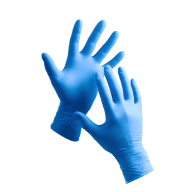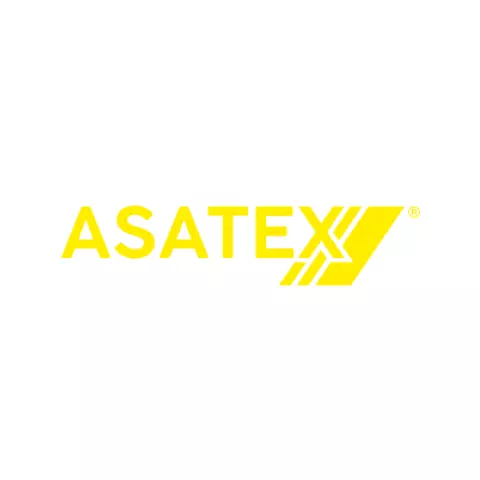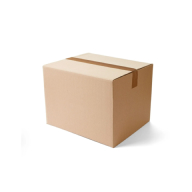DuPont Tychem® 6000 F FaceSeal 0611 Protective Suit
Asatex
visit storeProduct description
- Hood with rubber seal
- Taped seams
- Elasticated waist
- Back entry with zipper
- Closure system with double cover
- Attached undergloves
- Attached dissipative socks
- Antistatic equipmentThe DuPont logo, DuPont™, The miracles of science™ and all products identified with ™ or ® are trademarks or registered trademarks of DuPont de Nemours, Inc. DuPont's trademarks may not be used in connection with any product or service that is not DuPont's.
Polyethylene spunbond with barrier film
EN 1149-5:2008, EN 14126:2003, EN 14605:2005 A1:2009, EN ISO 13982-1:2004 A1:2010, EN 13034:2005 A1:2009, EN 1073-2:2002
Indicates how the waist is designed and adjusted (elastic, drawstring, belt) for secure fit, comfort during movement, and proper protection in work environments.
Determines durability, protection level, comfort, and suitability for specific work environments. Affects breathability, weight, and resistance to hazards.
Indicates the overall's hue, affecting visibility, stain-showing properties, heat reflection, and compliance with industry safety standards or team identification.
Indicates how fabric edges are joined and finished, affecting protection level, durability, and barrier effectiveness against liquids, particles, or contaminants.
Defines the overall's fundamental design (Regular, Insulated, Hooded, etc.), determining protection level, functionality, and suitability for specific work environments.
- Electrical Protection
- Chemical Resistance
Request a free sample
Test first and buy later. Visit any product page to request your free sample.
Standards and labels
EN 13034:2005 is a European standard that outlines the requirements and test methods for Type 6 protective clothing designed to provide protection against liquid chemical hazards. It specifies criteria for the fabric's resistance to penetration by liquid chemicals and establishes guidelines for the overall design and construction of the garments. The amendment A1:2009 introduces updates and refinements to enhance the performance and reliability of Type 6 protective clothing, ensuring improved protection for workers exposed to liquid chemical splashes and sprays. These standards are essential in industries where workers are at risk of encountering liquid chemical hazards, ensuring their safety and well-being.
Test results
Liquid Chemical Protection Type 6EN 13034:2005+A1:2009 specifies the requirements and test methods for protective clothing that provides limited protection against liquid chemicals, designated as Type 6. The 'Type 6' classification indicates that the clothing has been tested and found capable of resisting light spray and minor splashes of liquid chemicals. This test method assesses the fabric's ability to prevent penetration from a synthetic blood solution sprayed at the garment at different angles and pressures, simulating realistic conditions where accidental chemical splashes might occur. Protective clothing that achieves this classification is essential for workers in industries such as chemical manufacturing, painting, or pesticide application, where there is a risk of exposure to harmful liquids but full immersion is not expected, thus enhancing worker safety by providing sufficient protection in low-volume chemical exposure scenarios.
EN ISO 13982-1:2004 is a European standard that outlines the requirements and test methods for Type 5 protective clothing designed to protect against airborne solid particles. It sets criteria for material resistance, construction, and performance to prevent penetration of hazardous particles. The amendment A1:2010 introduces refinements and updates to the original standard, ensuring improved effectiveness and reliability of Type 5 protective clothing in providing protection against airborne solid particles. These standards are essential references for industries where workers are at risk of exposure to such particles, ensuring the appropriate level of protection.
Test results
Airborne Solid Particle Protection Type 5EN 14605:2005+A1:2009 is a European standard that sets rules for how certain types of protective clothing should be tested and what requirements they must meet in order to be considered safe and effective against chemical hazards. The standard covers the test methods and performance requirements for chemical protective clothing such as coveralls, gloves, boots and overalls. The standard also sets requirement for labeling, packaging and storage of these clothing. The "A1" in the standard name refers to the fact that it's an amendment or update to the original 2005 version of the standard. Tests must be done to make sure the protective clothing meets the standard. If the protective clothing pass the tests, they are considered good to use.
EN 1073-2:2002 is a European standard that defines the requirements for measuring and evaluating the resistance of textiles to penetration of airborne radioactive particles. The standard includes procedures for measuring the ability of textile materials to prevent the penetration of radioactive particles through the fabric. The performance requirements specify the conditions for testing, as well as the evaluation criteria for determining resistance. Possible test results include a rating on a scale of 1-5, with 5 indicating the highest level of resistance to particle penetration.
EN 14126:1999 is a European standard that sets guidelines for the protection of medical clothing against infective agents. It specifies the minimum requirements for the protection of medical clothing, including the material properties, design, and construction of the clothing. Testing includes things like barrier resistance, penetration resistance and filtration efficiency. Possible test results would include pass or fail based on whether the clothing meets the safety and performance requirements outlined in the standard.
EN 1149-5:2008 is a European standard that specifies the requirements for electrostatic dissipative (ESD) gloves. The standard defines performance requirements for material, design, and testing of ESD gloves. The gloves must be able to effectively discharge static electricity and protect the wearer from ESD. Testing includes measuring the surface resistance of the glove material. Pass/fail results are based on the gloves meeting or not meeting the specified requirements.
Test results
Material Performance TestedThe EN 1149-5:2008 standard specifies the performance requirements for material used in protective clothing designed to avoid incendiary discharges. The test result Tested means that the material has undergone relevant evaluation procedures to confirm its static dissipative properties. These tests generally involve measuring the electrical resistance of the material in ohms (Ω) to determine its capability to dissipate electrostatic charges and prevent sparking that could ignite flammable substances. The practical implications of this result for the respective product category (like protective workwear for use in explosive atmospheres) are significant, as it ensures that the clothing provides a level of protection against electrostatic discharges, potentially reducing the risk of fire or explosion in environments with flammable gases, vapors, or dusts.
PPE stands for "personal protective equipment." PPE Category 3 refers to equipment that is complex and provide the highest level of protection such as powered respirators, SCBA, and full body suits. In Europe, PPE Category 3 must meet certain safety standards set by the European Union, which means that it must be designed and manufactured to protect the user without causing harm. Companies that make or sell PPE must prove that it meets these standards. They also must have a quality management system in place, have to be audited regularly by a notified body and have to have a technical documentation.
CE Marking is a label that shows a product meets certain safety and environmental standards set by the European Union. To get the CE Marking, a company must test and certify their product meets these standards. CE Marking is required for many products sold in the EU, including electronics, machinery, toys and medical devices. It helps ensure that products are safe for consumers and the environment, and allows for easy trade within the EU.
Asatex delivery terms
Free delivery when you order more than 1 650,00 kr from Asatex
Supplier shipping fee 60,00 kr
Brand minimum 0,00 kr
1 253,84 kr
Shipping fee is 60,00 kr for orders under 1 650,00 kr
Sold in units of one piece
Need larger quantities?
Other products you may like
Recently viewed
Need help?
Get help from our experts
Other products you may like
Similar products you may like
Recommended for you
Asatex
Delivery time: 4 business days
Supplier shipping fee 60,00 €
Free shipping on orders over 1 650,00 €



Find +150,000 products from hundreds of brands
Autonomous sourcing platform
The most efficient way to source and order supplies for your operations
Sourcing
Ordering
List products you’re looking for and we’ll find the best products and prices for you – all for free.
Need help?
Get help from our experts
